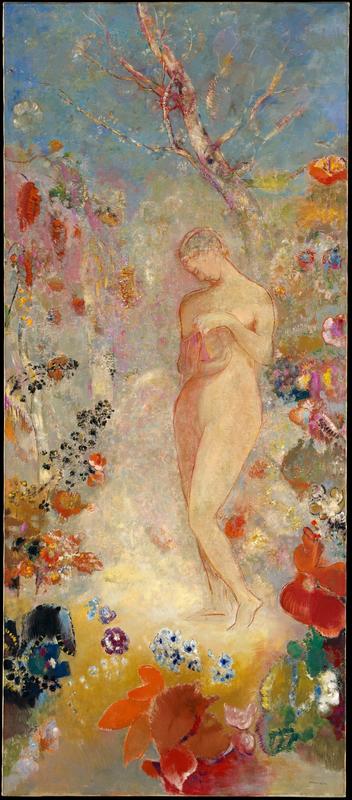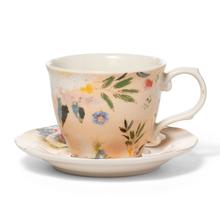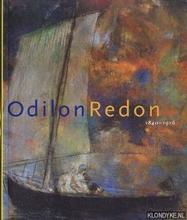More about Pandora
- All
- Info
- Shop

Sr. Contributor
The story of Pandora’s Box is almost as old as time itself, and the mythology has captivated artists for just as long.
Although tons of previous art was also based in the world of Classical mythology, Redon’s work has a totally different flavor than old-school artists who painted this subject matter. Gerôme’s Pygmalion and Galatea is a great example of the staid, academic style that dominated. For Redon, on the other hand, imagination was everything. It wasn’t always this way for Redon, though. The whole first half of his career was very Goya-esque with dark colors and figures that could have been lifted from a Tim Burton movie. This work, however, comes from the very end of his life, when he began to explore pastel colors, flowers, and the best way to depict the human spirit. Between 1908 and 1914, Redon became particularly obsessed with painting female characters from Classical mythology. Earlier variations on Redon’s Pandora theme are at the National Gallery of Art. For the Symbolists, artists like Edvard Munch who fancied themselves to be painting the innermost sanctums of the soul, women represented universal feelings.
Here, the enigmatic and doomed Pandora enjoys the beauty of an idyllic life before unleashing the evils that are hiding in her dreaded box. We see her in a perfect state of innocence. This may have appealed to Alexander M. Bing, the last guy who owned the painting before it entered the Met’s collection. He and his brother Leo struck real estate gold after building some of the most coveted apartment buildings in New York – places that people still pay as much as $5 million for a single apartment today. Alexander Bing was also a philanthropist, art collector, and even an amateur artist himself. He took a liking to the young Grace Hartigan, a young Abstract Expressionist painter who ran in the same circles as Helen Frankenthaler and Joan Mitchell. Unfortunately, Hartigan thought of Bing more like an uncle. So innocent – just like silly little Pandora.
Sources
- Curtis, Curtis. Restless Ambition: Grace Hartigan, Painter. New York: Oxford University Press, 2015. https://books.google.com/books?id=BBEHBgAAQBAJ&pg=PT162&lpg=PT162&dq=al…
- Myers, Nicole. “Symbolism.” In The Heilbrunn Timeline of Art History. Department of European Paintings. The Metropolitan Museum of Art. August 2007. https://www.metmuseum.org/toah/hd/symb/hd_symb.htm. Accessed 24 February 2020.
- The Art Story. “Odilon Redon.” Artists. https://www.theartstory.org/artist/redon-odilon/. Accessed 24 February 2020.
- The Metropolitan Museum of Art. “Pandora.” Collection. https://www.metmuseum.org/art/collection/search/437383?searchField=All&…. Accessed 24 February 2020.
- Wedemeyer, Dee. “Bing & Bing Sells Off its Properties.” In The New York Times. 30 June 1985. https://www.nytimes.com/1985/06/30/realestate/bing-bing-sells-off-its-p… Accessed 24 February 2020.













